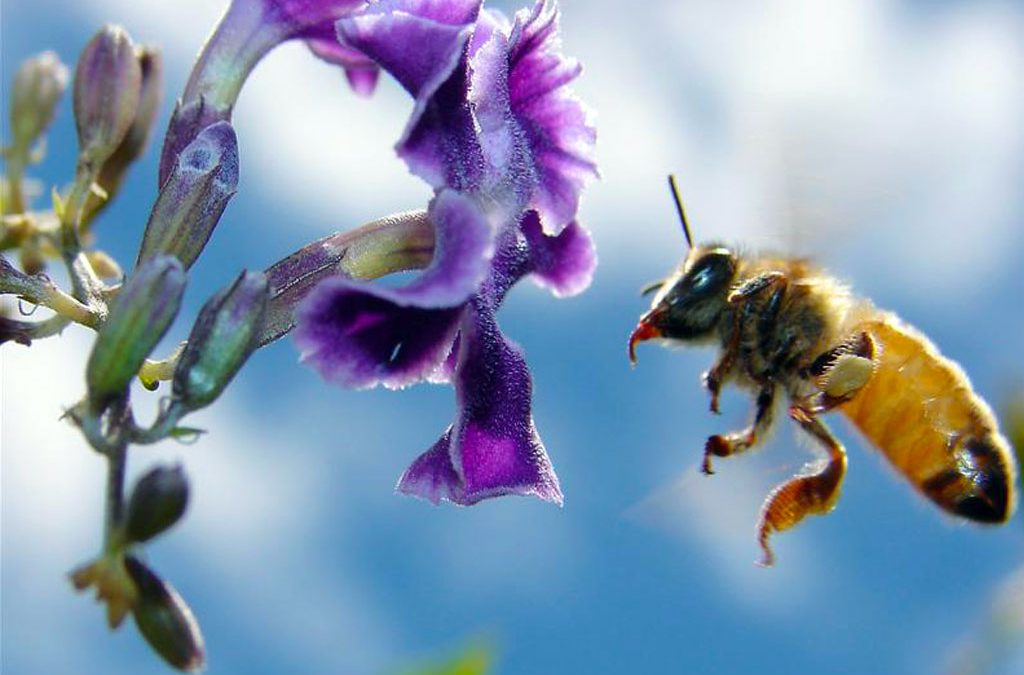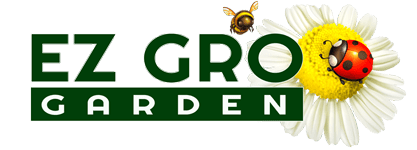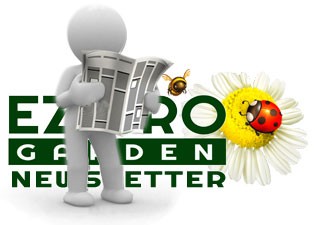
Honey Bee
The honey bee (Apis mellifera) is responsible for approximately 80% of the pollination of fruits, nut, grains, and vegetables in the United States today. Honey bees are not native to North America; they were brought here by European settlers in the colonial days to pollinate their crops and for the products created or gathered by the honey bees-honey, propolis, royal jelly, pollen, and beeswax.
| Common Name: | Honey Bee |
| Genus / Species: | Apis mellifera |
| Size: | On average, from 12 to 16 millimeters (about ½ to 5/8 inch for workers. Queens and Drones are longer. |
| Life Cycle: | Queens complete development in 15 ½ days, drones in 24 days and workers in 21 days for larvae and pupae stages. Only one queen is usually present in a hive. |
| Type of Beneficial: | Pollinators |
| Geographic distribution: | Honeybees differentiated into geographic races as they spread from Africa into Europe and Asia. There are currently 28 recognized subspecies based on these geographic variations. All species are cross fertile though reproductive adaptations may make crossing unlikely. |
| Pest Status: | Mostly considered beneficial because they pollinate many fruits, vegetables and ornamental flowers; they produce honey, beeswax, pollen and royal jelly; adult bees can sting, making them a nuisance to man and animals. They are a hazard only to sensitive individuals. |
But their contribution to mankind does not end there. More recently, research indicates that honey bee venom therapy may ultimately provide treatments for a variety of medical conditions in humans, including arthritis.
The greatest value of honey bees is in their service as pollinators which far outweigh their value as honey producers. The honey bee is well adapted for pollination. Each colony contains thousands of individuals which are available to forage for the food (pollen and nectar) that’s required to rear their young. Like other bees, their sense of smell, eyes, mouthparts, and numerous branched body hairs are ideally suited for finding food sources, sipping nectar, and collecting and distributing pollen.
Honey bees visit a wide variety of flower types. In a single day, one bee makes 12 or more trips from the hive, visiting several thousand flowers. On each trip, it confines its visit to one plant species, collecting one kind of pollen.
Honey bees have a complex communication system that enables the colony to find and collect food with maximum efficiency. These characteristics make honey bees a most valuable agent for cross-pollinating crops.
Other honey bee facts:
- Cornell University estimated the direct value of honey bee pollination in U. S. agriculture in the year 2000 at $14.6 billion.
- Honey was used in ancient times by the Egyptians, Greeks and Romans to pay taxes, as food sweeteners, in religious ceremonies, and to treat many medical conditions, including wounds.
- Honey contains vitamins, antioxidants, and is antimicrobial.
- Honey bees have 4 wings that beat 11,440 times per minute.
- Honey bees fly at a rate of 12 miles per hour.
- Bees possess five eyes: three small ones in a triangle on top of its head and a large compound eye on each side of its head.
- Bees cannot recognize the color red.
- Honey bees in a colony will fly approximately 55,000 miles and visit 2 million plants to make one pound of honey.
- The honeycomb is composed of hexagonal cells with walls that are only 2/1000 inch thick, but support 25 times their own weight.
- In the course of her lifetime, a worker bee will produce 1/12th of a teaspoon of honey.
- One colony can produce from 60-100 pounds of honey per year.
Who would have though that such a tiny creature could have such a major influence on human welfare?

Paper Wasps

Attracting Beneficial Insects

Golden Garden Spider

Butterfly

Spiny Orb Weaver
Trackbacks and pingbacks
No trackback or pingback available for this article.
Product categories
- Backyard Garden Accessories
- Commercial Garden Accessories
- Deck Garden
- Deck Garden Accessories
- Drop Ship
- EzGro Kits & Bundles
- Greenhouses
- Growing Media
- Growing Supplies
- Irrigation
- Kits
- Lighting
- Memberships
- Nutrients
- Nutrients & Growing Media
- Off Grid Systems
- Patio Garden Accessories
- Pumps
- Quad Pots
- Sales
- Uncategorized









Leave a reply